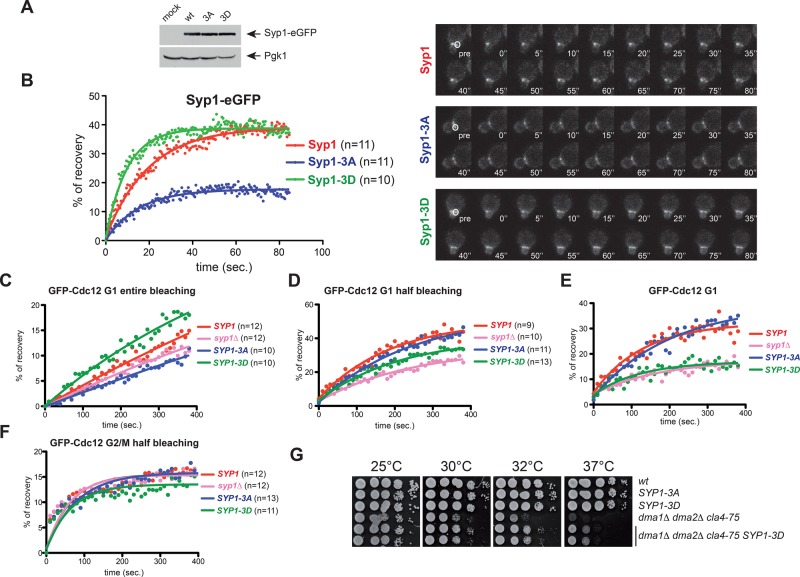FIGURE 6:
Syp1 phosphorylation by Pkc1 promotes Syp1 turnover at the bud neck and rigidity of the septin ring during its formation. (A) Steady-state levels of Syp1-, Syp1-3A-, and Syp1-3D-eGFP in logarithmically growing cells. (B) FRAP analysis of Syp1-eGFP at the bud neck. Half of the Syp1 ring was bleached in small-budded wild-type, SYP1-3A, and SYP1-3D cells, and recovery of fluorescence was measured every 0.5 s. Time 0 indicates the first time point after bleaching. Curves were fitted to monoexponential decay. (C–F) Cells with the indicated genotypes and expressing GFP-Cdc12 were analyzed by FRAP after bleaching of the entire (C) or half septin ring (D, F) in either G1 cells (C, D) or G2/M cells (F). Images were taken every 10 s. Time 0 corresponds to the first frame after bleaching. Curves were fitted with a one-phase association function (C, D) or with a two-phase association function (F). The goodness of the fit was based on 95% confidence intervals and R2 values. Kinetics of recovery after entire bleaching (C) was subtracted from those after half-bleaching (D) to obtain curves of recovery deriving only from septin dynamics inside the ring (i.e., recovery from the unbleached half of the ring; E). (G) Serial dilutions of stationary-phase cultures of strains with the indicated genotypes were spotted on YEPD plates and incubated for 2 d at the indicated temperatures.

